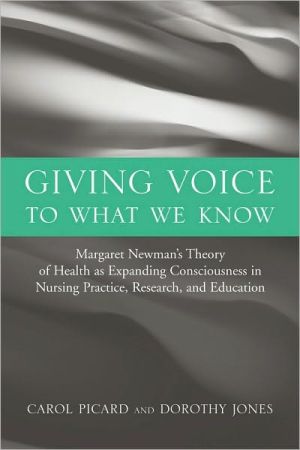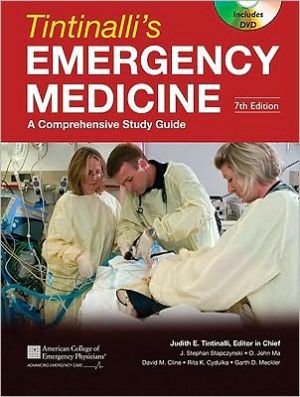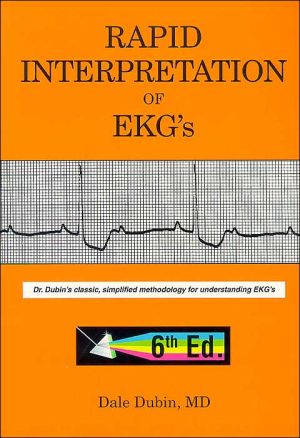Giving Voice to What We Know
This text covers the application of Margaret Newman’s theory, “Health as Expanding Consciousness,” to nursing practice, theory, and education. It provides clarity in measuring nursing sensitive outcomes and supports the need to establish partnerships with outpatients, as stated by the Institute of Medicine.
Search in google:
This book will serve as a guide for health care systems changes, as well as a useful framework for nursing education and clinical research. Doody Review Services Reviewer:Diane M Tomasic, EdD, RN(Slippery Rock University )Description:This book links the theory of Health as Expanding Consciousness (HEC) with nursing knowledge development, clinical practice, education and curriculum development, research, and nursing administration. It provides examples of the application of HEC.Purpose:The purpose is to provide insight into the application of HEC in various aspects of nursing practice by providing examples of using the model in clinical practice. This is a worthwhile purpose since nursing is being asked to justify clinical practice outcomes.Audience:The target audience for this book is nurses who teach, research, and practice within the framework of HEC. The contributors are nurses who practice within the framework of HEC.Features:Part one presents an overview of HEC including Newman's most recent thinking on the concept of caring within the context of HEC. Part two provides selected models and exemplars used by practitioners and researchers applying the models in a variety of settings. Part three focuses on application of HEC with selected participants. Part four focuses on application of HEC in nursing education. The final part is devoted to a dialogue between Margaret Newman, Sister Callista Roy, and Jean Watson focusing on the movement of nursing knowledge development toward theory convergence. The book concludes with suggestions for the further development and testing of the HEC models.Assessment:This book should be useful for practitioners using HEC as a framework for practice and research. It is also must reading for those desiring to learn about a nursing theory and see it operationalized.
1Caring in the human health experience32Health as expanding consciousness : knowledge in the discipline113Linking Newman's theory of health as expanding consciousness to ethics and caring274Suffering, growth and possibility : health as expanding consciousness in end-of-life care435Creating a healing environment for staff and patients in a pre-surgery clinic536The theory is the practice : an exemplar657Nursing praxis of family health738Engaging with communities in a pattern recognition process839Creating balance : rhythms and patterns in people with dementia living in a nursing home9510Creating an environment of care in clinical practice : administrative and practice perspectives10511Creative movement and reflective art : modes of expression for participant and researcher11912Parents of persons with bipolar disorder and pattern recognition13313Creating action research teams : a praxis model of care14314Recognizing patterns in the lives of women with multiple sclerosis15315Praxis as a mirroring process : teaching psychiatric nursing grounded in Newman's health as expanding consciousness16916Cultivating a way to sense pattern with advanced practice nursing students17917Doctoral student exemplar : transformation in the patient-nurse dyad18718Convergence and divergence : dialogue of nurse theorists : Newman, Watson, and Roy20519Dialogue of Newman scholars and others interested in HEC21320Concluding thoughts and future directions219
\ From The CriticsReviewer: Diane M Tomasic, EdD, RN(Slippery Rock University )\ Description: This book links the theory of Health as Expanding Consciousness (HEC) with nursing knowledge development, clinical practice, education and curriculum development, research, and nursing administration. It provides examples of the application of HEC.\ Purpose: The purpose is to provide insight into the application of HEC in various aspects of nursing practice by providing examples of using the model in clinical practice. This is a worthwhile purpose since nursing is being asked to justify clinical practice outcomes.\ Audience: The target audience for this book is nurses who teach, research, and practice within the framework of HEC. The contributors are nurses who practice within the framework of HEC.\ Features: Part one presents an overview of HEC including Newman's most recent thinking on the concept of caring within the context of HEC. Part two provides selected models and exemplars used by practitioners and researchers applying the models in a variety of settings. Part three focuses on application of HEC with selected participants. Part four focuses on application of HEC in nursing education. The final part is devoted to a dialogue between Margaret Newman, Sister Callista Roy, and Jean Watson focusing on the movement of nursing knowledge development toward theory convergence. The book concludes with suggestions for the further development and testing of the HEC models.\ Assessment: This book should be useful for practitioners using HEC as a framework for practice and research. It is also must reading for those desiring to learn about a nursing theory and see it operationalized.\ \ \ \ \ From The CriticsReviewer: Diane M Tomasic, EdD, RN(Slippery Rock University ) \ Description: This book links the theory of Health as Expanding Consciousness (HEC) with nursing knowledge development, clinical practice, education and curriculum development, research, and nursing administration. It provides examples of the application of HEC.\ Purpose: The purpose is to provide insight into the application of HEC in various aspects of nursing practice by providing examples of using the model in clinical practice. This is a worthwhile purpose since nursing is being asked to justify clinical practice outcomes.\ Audience: The target audience for this book is nurses who teach, research, and practice within the framework of HEC. The contributors are nurses who practice within the framework of HEC.\ Features: Part one presents an overview of HEC including Newman's most recent thinking on the concept of caring within the context of HEC. Part two provides selected models and exemplars used by practitioners and researchers applying the models in a variety of settings. Part three focuses on application of HEC with selected participants. Part four focuses on application of HEC in nursing education. The final part is devoted to a dialogue between Margaret Newman, Sister Callista Roy, and Jean Watson focusing on the movement of nursing knowledge development toward theory convergence. The book concludes with suggestions for the further development and testing of the HEC models.\ Assessment: This book should be useful for practitioners using HEC as a framework for practice and research. It is also must reading for those desiring to learn about a nursing theory and see it operationalized.\ \ \ 5 Stars! from Doody\ \








